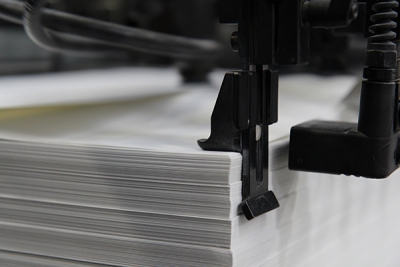20 Things You Didn’t Know About Recycled Paper

We have compiled a list of 20 things that you may not know about recycled paper*:
1 - With advances in technology and processes, recycled paper matches the print performance, opacity and whiteness of non-recycled paper.
2 - Manufacturing recycled paper produces less CO2 and Greenhouse gases than virgin fibre paper. Methane gas created by sending waste paper to landfill is 23 times higher and more harmful to the environment.
3 - On average, the production of virgin fibre paper uses up to twice as much energy than it takes to produce recycled paper.
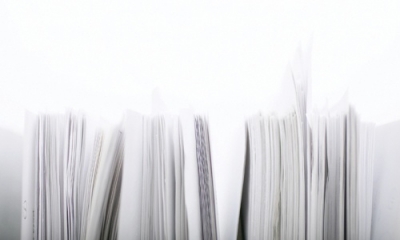
4 - Recycling reduces CO2 emissions by 20% when compared to incinerating paper.
5 - Once virgin fibre papers have been used; they can be recycled 4 to 5 further times; at which point they form the de-inking residue that is used in agriculture (e.g. fertiliser) and construction (e.g. bricks).
6 - Creating our Cocoon recycled paper uses 31% less energy than creating a virgin fibre paper.
7 - Producing a tonne our Cocoon recycled paper takes 35,000 fewer litres of water than producing the equivalent of virgin fibre paper.
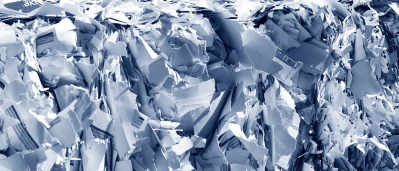
8 - It takes 1.2 tonnes of recycled fibres to produce one tonne of Cocoon recycled paper, but it would take 2.5 tonnes of wood to make one tonne of virgin fibre paper.
9 - With Arjowiggins Graphic you can see the environmental savings you have made using our Environmental Benefits Statement. This shows the exact amount of Landfill, CO2, Wood, Water and Energy you have saved by using recycled paper.
10 - For every one tonne of 100% recycled paper purchased instead of non-recycled, we save up to 3,799 kWh electricity, enough energy to power a standard light bulb continuously for nearly 5 years (based on Eural).
11 - All Arjowiggins Graphic manufacturing sites have ISO 50001 certification for best practice in energy management and a programme for continuous improvement.
12 - In Europe, 1 kilo of waste per person per day is produced; a figure that is constantly increasing (source: Eurostat). Unless this waste can be recycled or reused in some way, waste will end up in landfill or incineration.
13 - Paper and cardboard recycling is pioneering: collection rates have now reached as high as 72% in Europe (source: Confederation of European Paper Industries), positioning paper at the top of the list of most commonly recycled materials.
14 - Landfill has been found to contribute to as much as 50-75% of the total carbon emissions over a typical paper lifecycle.
15 - Recycling 17 tonnes of paper in the UK and avoiding landfill saves 5 tonnes of carbon emissions per year – that’s the equivalent to 500,000 party balloons filled with CO2.
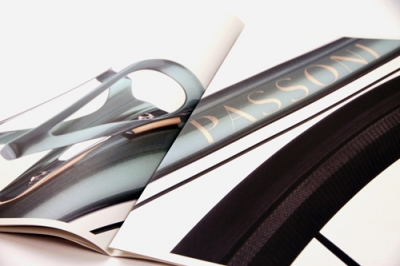
16 - Arjowiggins Graphic collects in the region of 20% of its waste paper from the UK, thus helping to reduce UK landfill.
17 - Due to 95% of Arjowiggins Graphic customers being based in Western Europe – transport makes up just 14% of the company’s overall emissions.
18 - Arjowiggins Graphic recycled pulp is produced using a Process Chlorine Free (PCF) method. The recycled pulp production process uses a multi stage cleaning process using bio degradable cleaners and chlorine free bleaches. Colour is removed from the fibres using sodium hydrosulphate, a reductive bleach. Hydrogen peroxide is used to brighten the fibres and when disposed of it breaks down into water and oxygen.
19 - Arjowiggins Graphic sources waste paper within Europe which has originated from sustainable forestry products that are EU Timber regulation compliant.
20 - Since 2012, Cyclus 100% recycled paper has supported worldwide charities in Rwanda, Burkina Faso, Madagascar, India and Mali
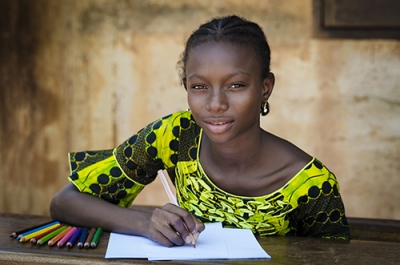
*Source: Water and energy savings are based on a comparison between a recycled paper manufactured at Arjowigins Graphic mills versus an equivalent virgin fibre paper according to the latest European BREF data available (virgin fibre paper manufactured in a non-integrated paper mill). CO2 emission savings is the difference between the emissions produced at an Arjowiggins Graphic mill for a specific recycled paper compared to the manufacture of an equivalent virgin fibre paper. Carbon footprint data evaluated by Labelia Conseil in accordance with the Bilan Carbone® methodology.
Results are obtained according to technical information and are subject to modification.
For more information on how the calculations are made please see the following link:
